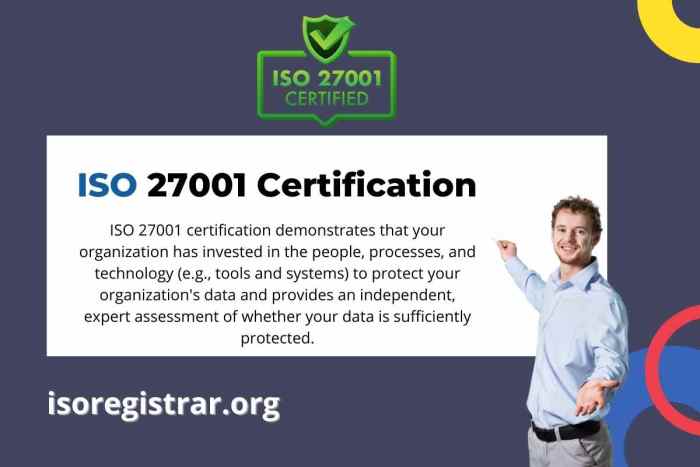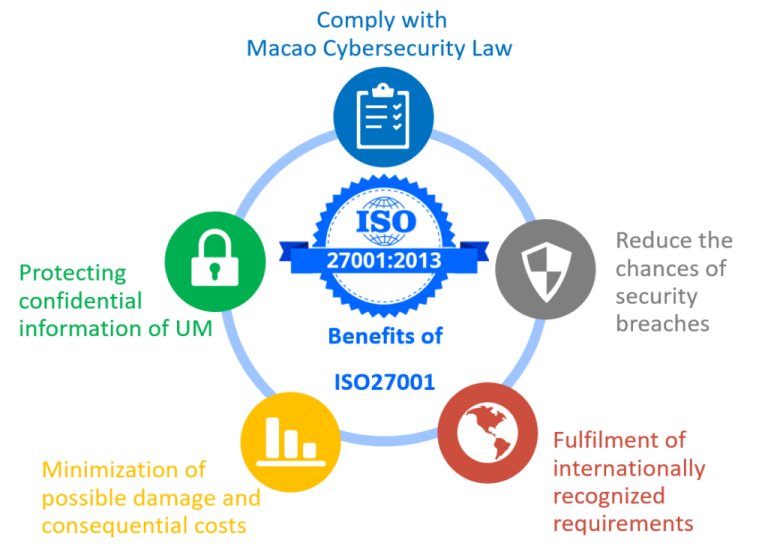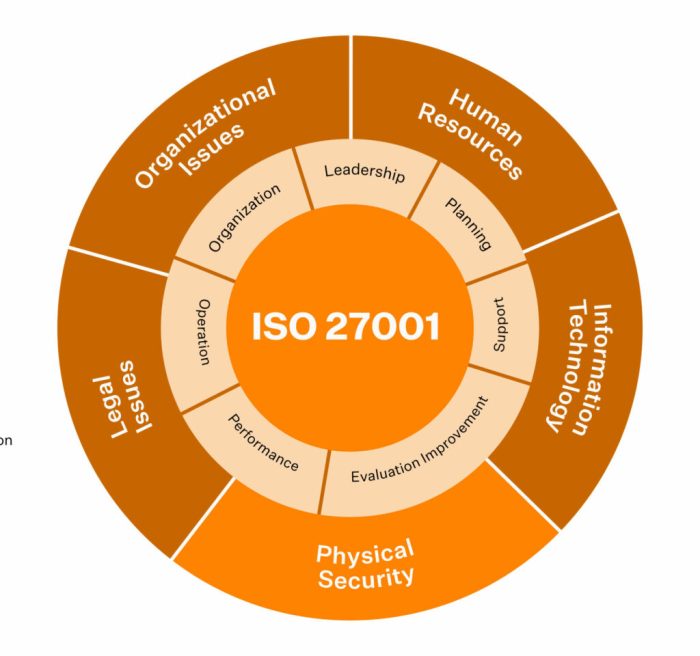HubSpot ISO 27001 Secure Operations
HubSpot ISO 27001 provides a structured approach to bolstering information security within HubSpot deployments. This framework details best practices for aligning HubSpot operations with ISO 27001 standards, covering crucial areas like risk assessment, data protection, and compliance. Understanding these principles is key to securing sensitive data and maintaining a trustworthy digital presence.
The document explores various facets of implementing ISO 27001 in a HubSpot environment. From defining security policies to managing risks and achieving compliance, this guide provides a comprehensive overview of the practical steps required for secure HubSpot operation. It emphasizes the importance of consistent security measures to mitigate vulnerabilities and safeguard sensitive information.
Introduction to HubSpot and ISO 27001
HubSpot is a leading inbound marketing and sales platform that empowers businesses to attract, engage, and delight customers. It provides a comprehensive suite of tools for marketing automation, customer relationship management (CRM), and sales enablement. Its popularity stems from its ease of use, robust features, and integration capabilities.
ISO 27001 is a globally recognized information security management system (ISMS) standard. It provides a framework for organizations to identify, assess, and mitigate information security risks. The standard Artikels best practices for managing information assets and improving security posture. Compliance with ISO 27001 demonstrates a commitment to safeguarding sensitive data and protecting business operations.
Relationship Between HubSpot and Information Security
HubSpot’s platform handles sensitive customer data, including contact information, financial details, and proprietary business insights. Maintaining the security and confidentiality of this data is paramount. Effective Okopxefvmeasures are essential for preventing unauthorized access, data breaches, and reputational damage. Aligning HubSpot operations with ISO 27001 principles ensures robust protection of this critical information.
Importance of Aligning HubSpot Operations with ISO 27001
Implementing ISO 27001 principles when using HubSpot strengthens the overall security posture of the business. It provides a structured approach to risk management, minimizing potential vulnerabilities and ensuring compliance with regulations. A robust ISMS helps protect against financial losses, legal liabilities, and damage to brand reputation, which can result from security breaches.
Comparison of General Security Best Practices and HubSpot-Specific Concerns
| General Security Best Practices | HubSpot-Specific Concerns |
|---|---|
| Strong password policies and multi-factor authentication (MFA) | Robust password management for HubSpot admin accounts and user access controls within the platform. |
| Regular security audits and vulnerability assessments | Regular assessments of HubSpot integrations and third-party applications for security vulnerabilities. |
| Data encryption at rest and in transit | Encryption of customer data within HubSpot’s platform and during data transfer. |
| Regular software updates and patching | Prompt application of security patches and updates to HubSpot software and associated add-ons. |
| Incident response plan | Specific incident response procedures for handling data breaches or security incidents within the HubSpot platform. |
Implementing ISO 27001 in a HubSpot Environment
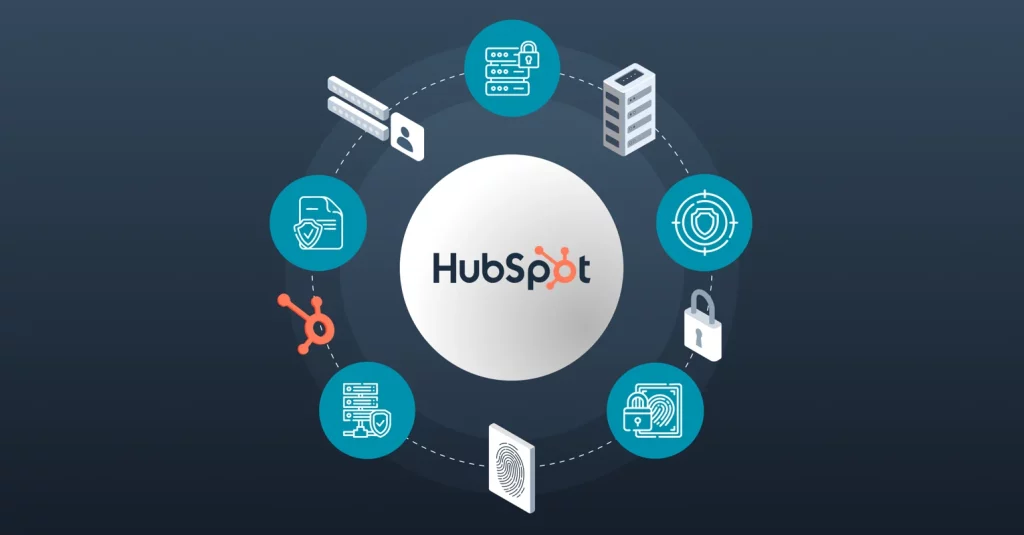
Implementing ISO 27001 within a HubSpot environment necessitates a structured approach to ensure data security and regulatory compliance. This involves understanding HubSpot’s inherent security features and identifying areas that need enhanced protection. Careful planning and execution are crucial to avoid disruption to business operations.
Implementing ISO 27001 within a HubSpot environment requires a comprehensive understanding of the platform’s security architecture and its potential vulnerabilities. The process entails defining clear security objectives, selecting appropriate controls, and regularly reviewing and updating these measures to maintain compliance.
Critical Areas Requiring Security Measures in HubSpot
HubSpot’s various functionalities, such as CRM, marketing automation, and customer service tools, present unique security challenges. Protecting customer data, ensuring data integrity, and maintaining system availability are paramount. Specific areas needing security attention include:
- Data Storage and Access Control: Thorough access controls are essential to prevent unauthorized access to sensitive customer information. Implementing granular permissions and multi-factor authentication (MFA) are crucial steps. This includes securing data at rest and in transit using encryption methods.
- Application Security: Protecting against vulnerabilities in HubSpot’s applications is critical. Regular security audits and penetration testing can help identify potential weaknesses and ensure appropriate patching. Implementing robust input validation to prevent common web vulnerabilities like SQL injection and cross-site scripting (XSS) is essential.
- Third-Party Integrations: Many businesses use third-party integrations with HubSpot. Security measures must extend to these integrations, ensuring the security of the data flowing between systems. Proper due diligence and vetting of third-party providers are vital.
- User Authentication and Authorization: Strong user authentication mechanisms, such as password policies and MFA, are critical to preventing unauthorized access. Regular user account reviews and disabling inactive accounts are vital components of a robust security posture.
- Data Backup and Recovery: Establishing a comprehensive data backup and recovery plan is essential to ensure business continuity in case of data loss or system failure. This includes regular backups, offsite storage, and defined recovery procedures.
Common Security Vulnerabilities in HubSpot Deployments
Common vulnerabilities in HubSpot deployments often stem from inadequate security configurations or a lack of ongoing monitoring. These include:
- Weak Passwords: Simple or easily guessable passwords remain a significant threat vector. Implementing strong password policies and promoting the use of MFA can mitigate this risk.
- Insufficient Access Control: Inadequate access controls can allow unauthorized users to access sensitive data or modify system configurations. Granular access controls, role-based access, and regular reviews are necessary.
- Unpatched Software: Failure to apply security updates promptly can expose systems to known vulnerabilities. Maintaining a robust patching schedule and automated update processes is crucial.
- SQL Injection and XSS Attacks: These common web vulnerabilities can compromise data integrity and expose sensitive information. Validating user input and employing secure coding practices can significantly reduce the risk of these attacks.
- Third-Party Integration Vulnerabilities: Vulnerabilities in third-party integrations can create pathways for attackers to gain unauthorized access to the HubSpot environment. Proper due diligence and regular security assessments of integrations are vital.
Methods to Mitigate Security Risks within HubSpot
Implementing a robust security posture involves proactively addressing potential risks. This can be achieved by:
- Regular Security Audits and Penetration Testing: These assessments help identify and address potential vulnerabilities before they can be exploited. Regular penetration testing is essential.
- Implementing Security Policies and Procedures: Clearly defined security policies and procedures ensure consistent security practices across the organization. These must be documented, communicated, and enforced.
- Employee Security Awareness Training: Educating employees on security best practices, such as phishing awareness and safe password management, is crucial. This should be a continuous process.
- Utilizing HubSpot’s Security Features: Leveraging features like MFA, access controls, and application security protocols can significantly enhance the platform’s security posture.
- Continuous Monitoring and Logging: Monitoring system logs and user activity helps identify suspicious behavior and enables rapid response to security incidents. Regular monitoring is essential.
Security Controls Relevant to HubSpot Usage
The following table shows Artikel’s security controls relevant to HubSpot usage, aligning with ISO 27001 principles:
| Control Area | Specific Control | Description |
|---|---|---|
| Access Control | Strong Password Policies | Enforce complex passwords and MFA |
| Data Security | Data Encryption | Encrypt data at rest and in transit |
| Application Security | Input Validation | Prevent SQL injection and XSS attacks |
| Incident Management | Security Incident Response Plan | Define procedures for handling security incidents |
| Third-Party Risk Management | Vendor Risk Assessment | Assess the security posture of third-party providers |
Security Policies and Procedures for HubSpot

Implementing robust security policies and procedures within a HubSpot environment is crucial for safeguarding sensitive data and maintaining compliance with regulations like ISO 27001. These policies must be clearly defined, regularly reviewed, and effectively communicated to all users. A comprehensive approach encompassing access control, data protection, and incident response is essential.
Effective security policies and procedures provide a framework for managing risks, ensuring data integrity, and maintaining the confidentiality of sensitive information within the HubSpot platform. A well-structured policy should be easily understood and consistently applied by all users, fostering a culture of security awareness.
Security Policy Document Template
A well-defined security policy document is a cornerstone of any robust security framework. This document should articulate the organization’s commitment to information security, specifying the principles, guidelines, and procedures for safeguarding data processed within HubSpot. The policy should clearly state the responsibilities of all stakeholders, including administrators, users, and third-party service providers. Regular reviews and updates are critical to ensure the policy remains relevant and effective in a constantly evolving technological landscape.
- Policy Statement: Clearly articulate the organization’s commitment to information security and its adherence to relevant regulations (e.g., GDPR, CCPA).
- Scope: Define the boundaries of the policy, including the specific HubSpot applications and data covered.
- Definitions: Provide clear and concise definitions of key terms and concepts relevant to information security.
- Responsibilities: Article the roles and responsibilities of individuals and teams involved in information security management.
- Access Control: Detail the procedures for managing user access to HubSpot applications and data, adhering to the principle of least privilege.
- Data Protection: Specify measures for protecting data confidentiality, integrity, and availability, including data encryption and backups.
- Incident Response: Describe the procedures for responding to security incidents, including reporting, containment, and recovery.
- Compliance: Article the organization’s commitment to compliance with relevant regulations and industry best practices.
- Monitoring and Review: Detail the process for monitoring security controls and periodically reviewing the policy for effectiveness.
Importance of Access Control in HubSpot
Implementing robust access control measures within HubSpot is critical for protecting sensitive data. The principle of least privilege should be strictly adhered to, granting users only the access necessary to perform their job functions. This minimizes the potential impact of a security breach and enhances accountability.
- Granular Access Control: Configure HubSpot to allow for precise control over user permissions, defining what data each user can view, edit, or delete. This ensures that only authorized personnel have access to sensitive information.
- Role-Based Access Control (RBAC): Employ RBAC to assign different access levels based on user roles and responsibilities. This simplifies access management and promotes a clear separation of duties.
- Regular Audits: Periodically audit user access permissions to identify and address any potential security vulnerabilities or misconfigurations.
Data Protection Measures for HubSpot Data
Protecting HubSpot data requires a multi-layered approach. Encryption, regular backups, and secure data storage are essential elements. Data loss prevention (DLP) strategies should also be considered to prevent unauthorized data exfiltration.
- Data Encryption: Encrypt sensitive data both in transit and at rest using industry-standard encryption methods.
- Regular Backups: Implement a robust backup and recovery plan to ensure data can be restored in the event of data loss.
- Secure Storage: Store data in secure environments that comply with relevant data protection regulations.
- Data Loss Prevention (DLP): Implement DLP measures to prevent unauthorized data exfiltration or breaches.
Incident Response Procedures for HubSpot
A well-defined incident response plan is vital for managing security incidents promptly and effectively. The plan should article the steps to be taken in the event of a suspected or confirmed breach, ensuring minimal disruption and rapid recovery.
- Incident Reporting: Establish a clear process for reporting suspected or confirmed security incidents.
- Containment: Detail the steps to contain the incident, preventing further damage or spread.
- Investigation: Article the steps to investigate the incident to determine its cause and scope.
- Recovery: Describe the procedures for restoring systems and data to their previous state.
- Post-Incident Review: Conduct a thorough post-incident review to identify lessons learned and implement improvements.
User Roles and Access Levels in HubSpot
A clear understanding of user roles and their corresponding access levels is essential for effective access control. This table provides an example of a possible structure.
| User Role | Access Level |
|---|---|
| Administrator | Full access to all HubSpot features and data |
| Sales Representative | Access to customer data, lead management tools, and reporting |
| Marketing Specialist | Access to marketing automation tools, campaign management, and reporting |
| Customer Support Agent | Access to customer data, support tickets, and knowledge base |
| Finance Manager | Access to financial data, billing information, and reporting |
Risk Assessment and Management in HubSpot: Hubspot Iso 27001
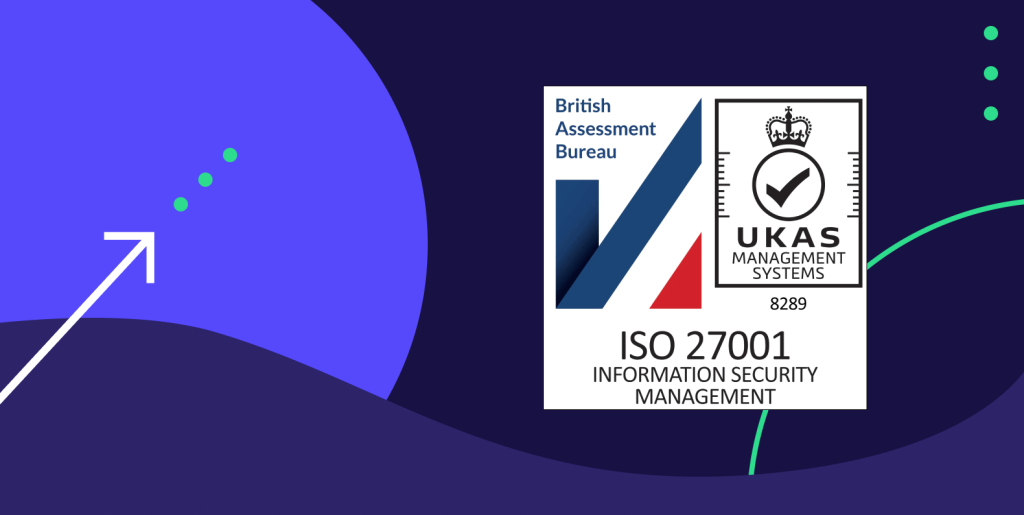
A robust security posture for a HubSpot implementation hinges on a thorough risk assessment and proactive management strategies. Understanding potential threats and vulnerabilities specific to the platform is crucial for mitigating risks and maintaining data integrity. This involves identifying, prioritizing, and mitigating potential issues.
Effective risk management in a HubSpot environment requires a systematic approach, encompassing both internal and external threats. This involves detailed analysis of potential security breaches, data leaks, and system vulnerabilities, leading to well-defined mitigation strategies.
Identifying Security Risks in a HubSpot Setup
Identifying security risks in a HubSpot environment necessitates a multi-faceted approach. This includes a comprehensive review of HubSpot’s functionalities, configurations, and integrations. Scrutinize user access permissions, data-handling procedures, and third-party integrations for potential vulnerabilities. A crucial step involves analyzing user behavior and potential malicious activities within the platform.
Prioritizing Security Risks in a HubSpot Context
Prioritizing security risks in a HubSpot setup requires a structured methodology. This involves evaluating the likelihood and impact of each identified risk. Risks with a high likelihood and high impact should receive immediate attention. Consider the potential financial, reputational, and operational consequences of each risk. Prioritization ensures that resources are allocated effectively to address the most critical security concerns first.
Strategies for Managing Risks within a HubSpot Environment
Managing security risks in a HubSpot environment requires implementing appropriate security controls. This includes enforcing strong passwords, enabling multi-factor authentication, and regularly updating HubSpot software and integrations. Regular security awareness training for users is essential to minimize the risk of human error. Furthermore, implementing robust access control policies, including least privilege access, can significantly reduce the potential impact of unauthorized access.
Methods for Regular Security Audits of HubSpot Implementations
Regular security audits of HubSpot implementations are vital for maintaining a secure environment. This includes periodic reviews of security policies and procedures, as well as regular penetration testing to identify vulnerabilities. Audits should encompass a thorough examination of user access controls, data encryption methods, and system configurations. Consider utilizing security information and event management (SIEM) tools to monitor and detect suspicious activities.
Potential Threats and Vulnerabilities Specific to HubSpot Usage
The following table categorizes potential threats and vulnerabilities specific to HubSpot usage:
| Category | Threat/Vulnerability | Description |
|---|---|---|
| Unauthorized Access | Weak passwords | Compromised user accounts allow unauthorized access to data and systems. |
| Insufficient access controls | Lack of appropriate access restrictions, leading to data breaches or unauthorized actions. | |
| Malware/Phishing | Malicious integrations | Compromised third-party integrations are used to introduce malware or gain unauthorized access. |
| Phishing attacks | Deceptive emails or websites attempting to steal user credentials. | |
| Data breaches | Data leakage through APIs | Improper configuration of APIs leading to unintended data leakage. |
| Insufficient data encryption | Lack of encryption for sensitive data in transit or at rest. | |
| System vulnerabilities | Outdated HubSpot versions | Using outdated HubSpot versions containing known vulnerabilities. |
| Unpatched security vulnerabilities | Failing to apply security patches promptly. |
Data Protection and Privacy in HubSpot
HubSpot’s platform handles a vast amount of customer data, making data protection and privacy paramount. Understanding the regulations governing this data and implementing robust security measures are crucial for maintaining trust and avoiding potential legal issues. This section delves into the specific regulations impacting HubSpot, the handling of sensitive data within its environment, and practical steps for ensuring data privacy.
Implementing appropriate data protection measures is essential for maintaining customer trust and avoiding legal ramifications. This involves a proactive approach to understanding and adhering to relevant regulations, coupled with the implementation of robust security protocols. These measures ensure that customer data is handled responsibly and transparently.
Data Protection Regulations Relevant to HubSpot
Numerous regulations govern the handling of personal data, including GDPR the General Data Protection Regulation (GDPR), the California Consumer Privacy Act (CCPA), and others. These regulations mandate specific requirements for data collection, storage, processing, and transfer. Compliance with these regulations is critical for organizations operating globally. Understanding the specific regulations relevant to HubSpot’s operations and client base is essential. This ensures that the platform is aligned with the requirements of various jurisdictions.
Handling Sensitive Data within HubSpot
HubSpot offers features to manage sensitive data, but organizations must actively implement policies to protect this information. This involves configuring access controls, implementing data encryption, and regularly reviewing and updating security protocols. Properly classifying data as sensitive (e.g., financial information, Personally Identifiable Information (PII)) and implementing appropriate security measures are essential for maintaining compliance.
Examples of Data Breaches Related to CRM Platforms
Several CRM platforms have experienced data breaches in the past. These breaches often stemmed from vulnerabilities in the platform’s security, inadequate security protocols, or a lack of data encryption. A breach in a CRM system can expose sensitive customer data, leading to reputational damage, financial penalties, and legal ramifications. Examples include breaches involving customer records, financial details, and other sensitive data, highlighting the importance of robust security measures.
Measures for Ensuring Data Privacy within a HubSpot System
Several measures can enhance data privacy within a HubSpot system. These include:
- Implementing Access Controls: Restricting access to sensitive data to authorized personnel based on their roles and responsibilities.
- Data Encryption: Encrypting data both in transit and at rest using industry-standard encryption methods.
- Regular Security Audits: Conducting regular security audits to identify and address vulnerabilities.
- Data Minimization: Collecting only the data necessary for specific business purposes.
- Data Subject Rights: Implementing processes to facilitate data subject access requests, data portability, and data erasure requests by regulations like GDPR.
These measures collectively bolster the security posture of the HubSpot system and contribute to maintaining the privacy of user data.
Data Protection Requirements and HubSpot’s Compliance Features
This table summarizes key data protection requirements and HubSpot’s features designed to address them.
| Data Protection Requirement | HubSpot Compliance Feature |
|---|---|
| Data Minimization | Ability to segment and target specific audiences, thereby minimizing the collection of unnecessary data. |
| Data Encryption | HubSpot’s platform utilizes industry-standard encryption protocols to protect data in transit and at rest. |
| Access Control | User roles and permissions enable granular control over data access. |
| Data Subject Rights | HubSpot’s features support data subject access requests, data portability, and data erasure. |
| Data Breach Notification | HubSpot’s platform can be configured to automatically alert users in case of a breach. |
Compliance and Auditing with HubSpot and ISO 27001
Achieving ISO 27001 certification within a HubSpot environment requires a meticulous approach, integrating the platform’s functionalities with the robust framework of the standard. This involves a deep understanding of both HubSpot’s security features and the specific controls in ISO 27001. A well-defined plan is crucial to ensure smooth implementation and successful certification.
The journey to ISO 27001 certification involves a structured process. This includes thorough risk assessments, the implementation of appropriate security controls, and meticulous documentation. The success of this endeavor is directly tied to the ability to demonstrate consistent compliance with the standard, and regular audits are key to maintaining that compliance.
Process for Achieving ISO 27001 Certification in a HubSpot Environment
Implementing ISO 27001 in a HubSpot environment requires a meticulous mapping of the platform’s security features to the standard’s requirements. This involves identifying and assessing risks specific to the HubSpot platform and implementing appropriate controls. This mapping should include a detailed analysis of HubSpot’s built-in security features, such as access controls, data encryption, and user authentication, to determine how they align with the requirements of ISO 27001. This also involves understanding how to configure HubSpot to meet the specified security standards.
Importance of Regular Audits and Assessments
Regular audits and assessments are crucial for maintaining compliance with ISO 27001. They provide a mechanism to verify that the implemented controls are effective and that the organization remains compliant. These audits should encompass all aspects of the security infrastructure, including the HubSpot platform. The findings from these audits should be used to identify any gaps in controls and to implement corrective actions. Audits are essential to ensure that the security posture remains aligned with evolving threats and vulnerabilities.
Best Practices for Demonstrating Compliance with ISO 27001
Demonstrating compliance with ISO 27001 involves meticulous documentation and consistent implementation of the controls in the standard. It’s critical to maintain comprehensive records of all security procedures, risk assessments, and audit findings. Furthermore, regular reviews of the controls, particularly those relevant to the HubSpot platform, are necessary to adapt to evolving threats and maintain compliance. Thorough documentation of these procedures and controls will be vital to the audit process.
Role of Documentation in Maintaining Compliance, Hubspot iso 27001
Comprehensive documentation is essential for maintaining compliance with ISO 27001. It serves as a record of the organization’s security policies, procedures, and controls. This documentation should include details of risk assessments, security controls implemented within the HubSpot platform, and audit results. Clear and concise documentation facilitates understanding and consistency in the implementation and maintenance of controls. This also allows for a thorough and accurate evaluation during audits.
Audit Procedures and Reporting Requirements
A structured approach to auditing is essential to ensure consistency and efficiency. This includes predefined audit procedures, clear audit schedules, and well-defined reporting requirements. This structured approach facilitates a thorough assessment of the security controls. Thorough documentation of the audit process, including the scope, procedures, and findings, is crucial.
| Audit Procedure | Reporting Requirements |
|---|---|
| Risk Assessment Review | Summary of identified risks, controls implemented, and residual risks. |
| Security Control Testing | Documented evidence of testing procedures, findings, and corrective actions. |
| Compliance Verification | Detailed reports on adherence to ISO 27001 requirements and identified deviations. |
| Policy Review | Summary of policy adherence, updates, and any necessary revisions. |
Tools and Technologies for HubSpot Security
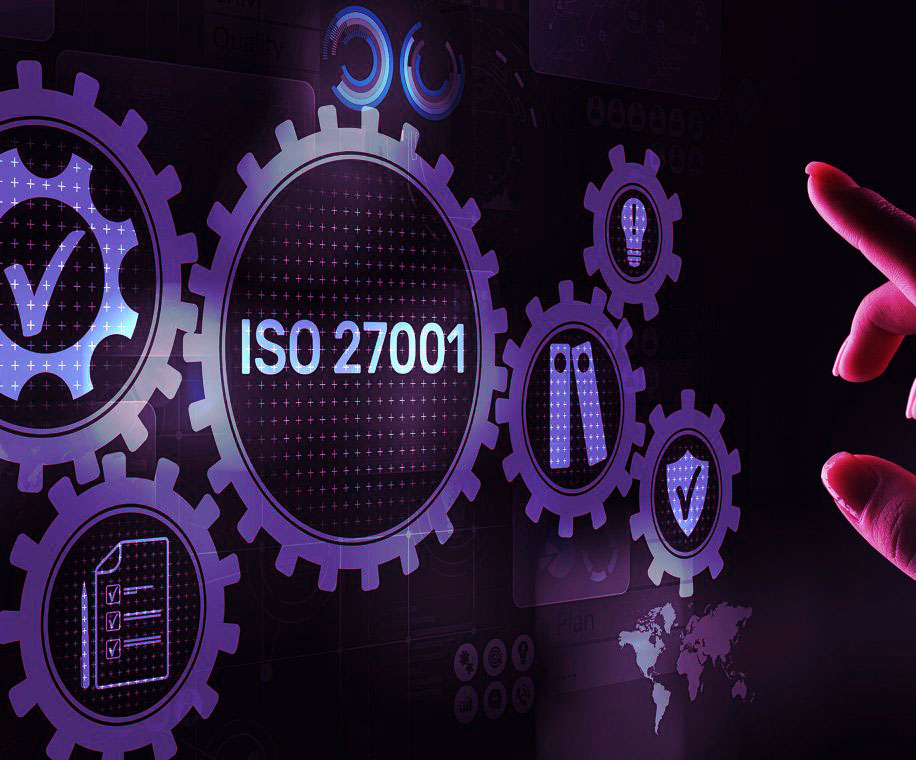
Source: isomantra.com
Implementing a robust security posture for your HubSpot environment necessitates the integration of suitable security tools. This involves not only choosing the right tools but also understanding how to integrate them seamlessly into your existing workflows. A well-structured security approach enhances the overall protection of your HubSpot data and systems.
A comprehensive strategy for HubSpot security involves identifying potential vulnerabilities, implementing appropriate safeguards, and consistently monitoring for threats. This necessitates a range of tools and technologies, from basic security audits to advanced threat detection systems.
Security Tools Compatible with HubSpot
A variety of security tools are compatible with HubSpot, catering to diverse needs and security requirements. These tools can be leveraged to enhance the overall security posture of your HubSpot platform, ranging from basic audits to advanced threat detection. Careful consideration of features and functionalities is critical in selecting the appropriate tools for your specific needs.
Integrating Security Tools with HubSpot Workflows
Seamless integration of security tools with HubSpot workflows is crucial for effective implementation. This typically involves API integrations, custom applications, or third-party connectors. Successful integration streamlines security processes, allowing for automated tasks, real-time monitoring, and efficient reporting.
Examples of Security Tools and Their Functionality
Several tools are available to bolster HubSpot security. These tools provide various functionalities, from threat detection to data loss prevention.
- HubSpot Security Center: This integrated platform provides comprehensive security management capabilities, including threat detection, vulnerability scanning, and access controls. It offers a centralized dashboard for monitoring and managing security aspects within your HubSpot account.
- Third-Party Security Information and Event Management (SIEM) Systems: These systems can be integrated with HubSpot to enhance threat detection and response capabilities. They collect and analyze security logs from various sources, including HubSpot, to identify potential threats and malicious activities in real time. They provide a comprehensive view of security events across your entire ecosystem, including HubSpot.
- Data Loss Prevention (DLP) Tools: These tools can be integrated with HubSpot to prevent sensitive data from leaving the platform. They identify and monitor sensitive data, preventing unauthorized access or accidental exposure. DLP tools often provide granular control over data access and usage, enhancing data security and compliance.
Demonstrating How These Tools Enhance HubSpot Security
These tools collectively enhance HubSpot security by automating security tasks, providing real-time threat detection, and enabling proactive security measures. This leads to a more secure environment by mitigating potential vulnerabilities and breaches. This approach allows for proactive security management, mitigating potential risks, and ensuring compliance.
Comparison of Security Tools for HubSpot
| Tool | Functionality | Integration with HubSpot | Cost |
|---|---|---|---|
| HubSpot Security Center | Threat detection, vulnerability scanning, access controls | Integrated | Included with HubSpot subscription |
| SIEM Systems (e.g., Splunk, Sumo Logic) | Threat detection, log analysis, security monitoring | API integration or custom app | Variable, often based on usage |
| DLP Tools (e.g., Proofpoint, Barracuda) | Data loss prevention, sensitive data identification | API integration or custom app | Variable, often based on usage and features |
Case Studies and Best Practices
Successfully implementing ISO 27001 in a CRM environment like HubSpot requires a meticulous approach. This involves understanding the unique security needs of a CRM system and adapting the ISO 27001 framework to address those needs effectively. A well-defined risk assessment, coupled with appropriate security controls, is crucial for ensuring data protection and operational resilience.
Organizations often leverage case studies and best practices to streamline their implementation process. These resources provide valuable insights into successful deployments, enabling organizations to avoid common pitfalls and learn from the experiences of others. By analyzing successful strategies, organizations can optimize their HubSpot security posture and improve their overall compliance.
Successful Implementations in CRM Environments
Organizations successfully implementing ISO 27001 within CRM environments often prioritize data confidentiality, integrity, and availability. Key aspects include robust access controls, regular security audits, and incident response plans. A crucial aspect is establishing clear roles and responsibilities for security personnel.
Best Practices for HubSpot Security
Several best practices are commonly employed to enhance HubSpot security within the context of ISO 27001 compliance. These include multi-factor authentication, strong password policies, and regular security awareness training for employees. Regular software updates are critical to patch known vulnerabilities. Employing a robust security information and event management (SIEM) system is highly recommended to detect and respond to threats in real time.
Improved HubSpot Security through ISO 27001
Organizations adopting ISO 27001 often experience a demonstrable improvement in their HubSpot security. This includes reduced vulnerability exposure, enhanced data protection, and a more robust incident response capability. Organizations typically report improved data privacy compliance and increased stakeholder confidence. Enhanced security awareness among employees is often a notable outcome.
Challenges and Solutions in Integrating HubSpot with ISO 27001
Integrating HubSpot with ISO 27001 can present certain challenges, but these are often surmountable. One challenge is ensuring data privacy compliance with the various regulations, like GDPR or CCPA. Solutions include implementing appropriate data masking, access controls, and data retention policies. Another challenge involves customizing existing HubSpot functionalities to align with ISO 27001 requirements. Solutions involve careful planning and engaging with HubSpot’s support team to tailor the system to meet compliance needs.
Key Learnings from Various Case Studies
| Case Study | Key Learning | Impact on HubSpot Security |
|---|---|---|
| Company A | Prioritizing a phased implementation approach proved crucial. | Reduced implementation time and minimized disruption to daily operations. |
| Company B | Robust data loss prevention (DLP) policies are vital. | Improved data security and compliance with industry regulations. |
| Company C | Proactive risk assessments are essential. | Identified potential vulnerabilities early and mitigated them effectively. |
| Company D | Employee training on security best practices is critical. | Improved security awareness and reduced the likelihood of human error. |
| Company E | Regular security audits are necessary for continuous improvement. | Ensured compliance with ISO 27001 requirements and detected any emerging threats. |
Last Word
In conclusion, HubSpot’s ISO 27001 compliance ensures a robust security posture for your HubSpot implementation. By addressing key areas like security policies, risk management, and data protection, organizations can significantly reduce vulnerabilities and enhance their overall security posture. This comprehensive approach not only safeguards data but also fosters trust and confidence in your HubSpot-based operations.



